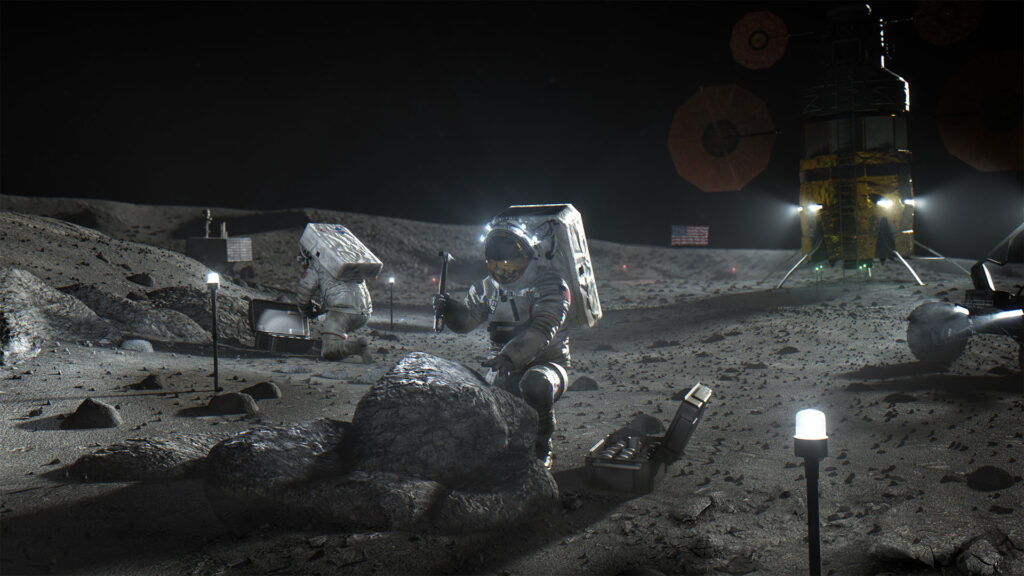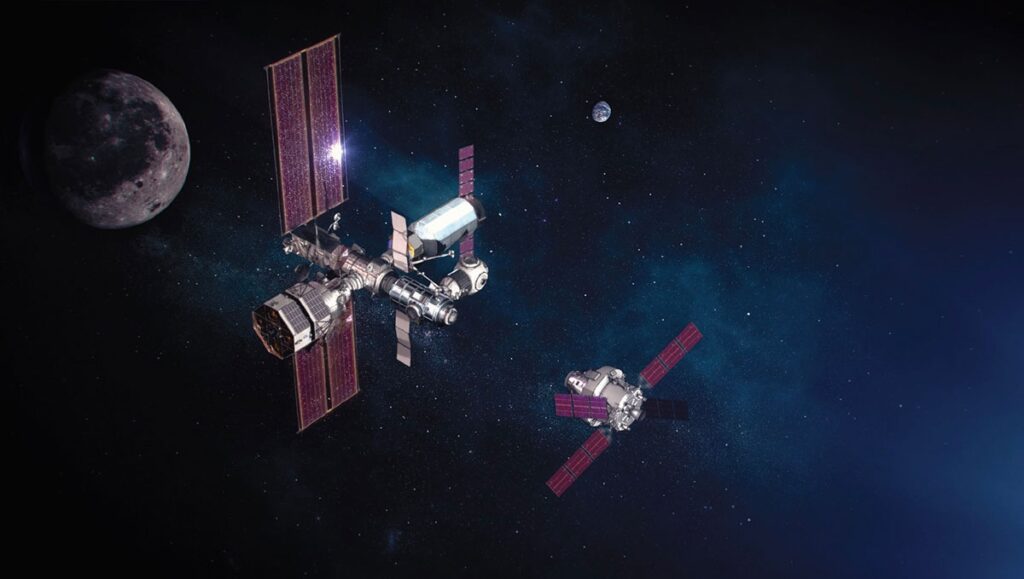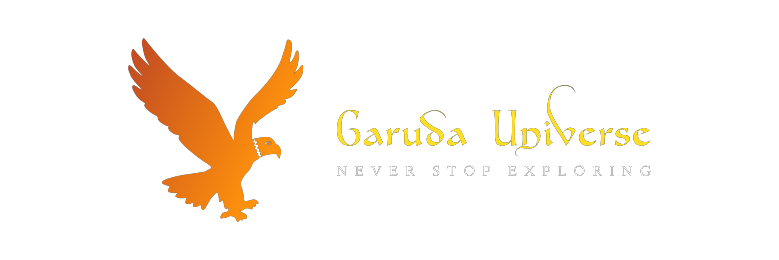NASA ’s Artemis Program is a United States government-funded human space flight program to land First Women and the next man on the Moon. Let’s explore in detail the space mission.
| Country | United States |
| Goal | Learn through robotic and human activities on the surface and in orbit around the Moon and later use that knowledge for sending astronauts to Mars. |
| Budget | 35 Billion $ USD |
| Launch Vehicle: | Gateway, SLS, Orion |
| Organisation: | NASA, in collaboration with industry and International Partners |
| Launch Site | Kennedy Space Center |

The last human to moonwalk on the natural satellite was back in 1972, 48 years ago during NASA’s Apollo 17 mission. Astronauts have often said that the biggest reasons why humans haven’t returned to the surface of the moon are budgetary and political hurdles – not scientific or technical challenges. Now the wait is finally over, the space agency will try to land the First Women and the next man on the moon by 2024.
‘That’s one small step for a man. One giant leap for mankind.’ This sentence by the first man on the moon could very soon be said by a woman. The objective of the 1st phase of NASA’s Artemis program is to drop 2 astronauts – the first woman and the next man – at the South Pole of the luna in 2024.
The schedule is extremely tight because it is based on the validation of the SLS launcher (Space Launch System), Orion spacecraft, and the HLS (Human Landing System). SLS is the most powerful rocket since Saturn V and the service module for Orion habitable spacecraft is provided by the European Space Agency (ESA). Full development of a new module of lunar descent called HLS which is equivalent to the LEM of the Apollo program is still under development.
Timeline for the 1st phase of Artemis -
Artemis I in November 2021: 1st SLS launch and Orion’s 1st flight around the Moon.
Artemis II in 2023: 1st manned trip with 4 astronauts for a flight around the Moon.
Artemis III in 2024: 2nd manned trip with 4 astronauts, landing at the South Pole of 2 astronauts in the HLS lunar descent module.
GATEWAY, A STATION IN LUNAR ORBIT

“Initially, the return of astronauts to the Moon was targeted for 2028,” – Jean Blouvac, head of the exploration and manned flight programs at CNES. But, at the request of US President Donald Trump, this return has been brought forward to 2024. The current plan does not specify whether the astronauts will dock to the Gateway. The construction of this station in lunar orbit, necessary for a sustainable return to the Moon or to prepare for more distant trips, takes place in parallel with the 1st phase of Artemis. The shipment of its 1st modules by an American private launcher is expected in 2023. “
Europe will participate in the construction of the Gateway station in a second phase, with the delivery of the international I-HAB housing module from 2025, then, in 2026 or 2027, the delivery of the ESPRIT module which will provide additional communication with the Moon, a system for reloading propellants (xenon and hydrazine) and an observation post. French manufacturers are very involved in the development of these 2 modules: ESPRIT is under the supervision of Thales Alenia Space France, with the involvement of other French subcontractors; French industry will also supply major avionics and life support subsystems to I-HAB under the supervision of Thales Alenia Space Italy.
‘Gateway and the Artemis program are the preludes to a sustainable occupation of the moon and the longer-term sending astronauts to Mars’
– Jean Blouvac.
SLS - Space Launch System

NASA’S Space Launch System (SLS) is a super heavy-lift launch vehicle (SHLLV), that has been under development since 2011 by the United States. It is the agency’s first deep-space most powerful rocket since Saturn V, that will send humans and cargo to the Moon and beyond. The Space Launch System is designed to be evolvable and flexible. The SLS will launch the Orion spacecraft from NASA’s Kennedy Space Center in Florida.
Orion Spacecraft

Orion is a reusable space capsule that is used for NASA’s human spaceflight programs. The spacecraft consists of Crew Module (CM) manufactured by the aerospace company ‘Lockheed Martin’ and the European Service Module (ESM) manufactured by the company ‘Airbus Defence and Space’. The spacecraft will carry the crew to luna orbit where they will transfer to a human landing system. The spacecraft will be used by the crew to return home safely, as it has been built to withstand the extreme heat that is experienced upon re-entry into the atmosphere of the Earth. It is capable of supporting a crew of six beyond low Earth orbit (LEO). Orion can last up to 21 days if undocked and up to six months when docked.
* The information provided herein is, to the best of our knowledge and is only for informative purpose. If you have a news update or correction, let us know at -info@garudauniverse.com




